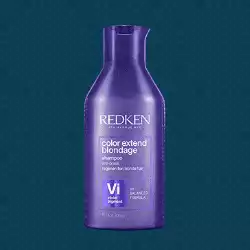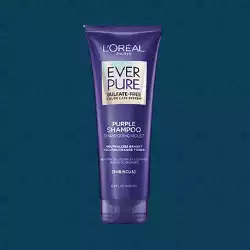Jump to:
When you bleach or lighten your hair, the last thing you want to end up with is the dreaded B-word: Brassiness. But what is brassiness in hair, and why is it such a problem when lightening your locks? Is it always bad to have brassy tones in your hair?
While “brassy” may be a beauty buzzword right now, the truth is that some, but not all, skin undertones actually look best with warm, brassy tones in the hair. And the reality is that everyone who lightens their hair will deal with some level of brassiness unless the hair is properly toned.
If you’re under the impression that brass=bad, it’s time to reframe your thinking. Brass is the enemy of cool-toned hair colors, but it’s not necessarily a bad thing if you’re shooting for a warmer shade.
We’ll fill you in on what brassiness is, what causes it, when brass can be a good thing, and how you can tone it down for a color you’ll love in this guide. Ready to become an expert on brassiness. Let’s go!
What Is Brassiness in Hair?
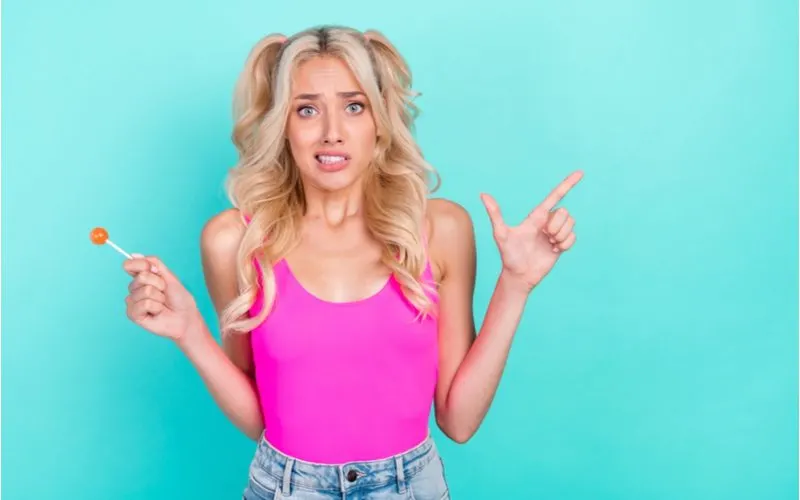
Roman Samborskyi/Shutterstock
Brassiness in hair occurs when the natural hair color is lifted or lightened, allowing warm tones to show through. When you see warm tones in lightened hair – yellows, oranges, reds, and caramel – those are considered brassy tones.
In fact, brassy is synonymous with warm. So any warm hair color could be considered brassy, but we usually reserve the word brassy for unwanted warm tones in the hair.
Rarely will you hear someone request a brassy blonde – but they might say they want a warm, caramel blonde. Likewise, if unwanted warm tones begin to show through as a cool, ash-toned color fades, most people won’t say, “My hair color is getting warmer.” They’ll say, “My hair color is turning brassy.”
So while brassy tones really just refer to warm undertones in the hair, this term is usually reserved for the warm tones we don’t want.
Other Words for Brassy
Brassiness goes by many names. It helps to recognize them all, especially if you’re trying to pick a new color you’ll like. You might hear brassy tones described as:
- Warm
- Golden
- Honey
- Caramel
- Buttery
- Wheat
- Bronze
- Butterscotch
- Strawberry
- Copper
If you see any of these words describing a hair color, you’ll know it’s a warm color. But it’s only considered truly brassy if these tones show up when you didn’t want them to. That’s usually when you’re after a cool-toned color but end up with warm-toned color instead.
So if you tried to bleach your own platinum blonde highlights (cool toned) and they ended up more like a honey blonde or coppery blonde (warm toned), you’d say your highlights turned out too brassy.
What Causes Brassiness?
If you want to avoid brassiness in your hair, you need to know what causes it first. This is especially true if you plan on bleaching or lightening your hair at home, but it’s helpful to have this knowledge even if you’re leaving your locks to a licensed professional. So what causes brassiness in the first place?
When you use bleach and developer to lighten your hair color, those chemicals go to work removing the natural pigments from your hair shaft.
Your natural melanin pigments that lend color to your hair strands (eumelanin and pheomelanin) react with the bleach and developer. The process is called oxidation. When your hair is allowed to process with bleach for long enough, your hair’s melanin pigments become colorless or have a barely noticeable pale yellow tint.
But if your hair doesn’t fully process with bleach (like if you used a too-low developer volume or didn’t leave it on long enough), your natural pigments won’t be turned colorless or very pale yellow. Instead, they’ll be oxidized just enough to lighten up to another warm shade.
The thing is – and this is super important to realize – everyone will uncover these warm, brassy tones when they bleach or lighten their hair. Everyone! It doesn’t matter what your natural hair color is. Once you start lifting that color with bleach, you’re going to come out with warm, brassy tones (until you use a toner) every single time.
This is just the way melanin pigments react to bleach. No one lifts directly to white blonde. They lift to a very pale yellow blonde, and silver or ash toner does the rest.
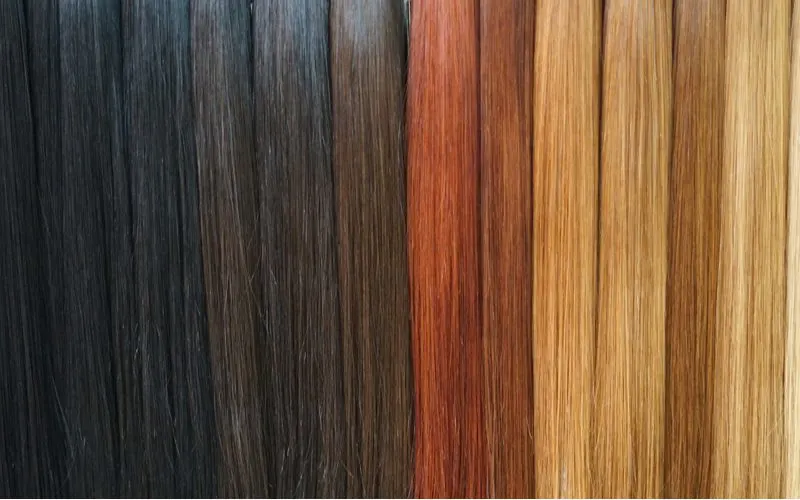
Potchanee B/Shutterstock
The photo above shows the range of pigments exposed during the lightening process. If you start with jet-black hair and bleach it, it doesn’t go straight from black to blonde.
Instead, as the melanin molecules react with the bleach and oxidize, you move through black, warm brown, red shades, orange shades, yellow shades, and finally, pale blonde. Once you’ve reached that very light pale yellow blonde color, your natural melanin pigments have fully oxidized.
If you’ve lightened your hair and you’re seeing orange-y or bronze tones peeking through, that’s the very definition of brassiness.
The good news is that you can make it work either by:
- Embracing the warm, brassy tones
- Continuing to lift the hair with bleach until it reaches a lighter level
- Applying a cool or ash toner to counteract the brassiness
We’ll talk more about how to fix brassiness in a bit.
Is Brassy Hair Always Bad?
Now that we’re clear on the definition of brassiness, is it always a bad thing? Brassy hair may sound bad, but the truth is that brassy tones can actually be flattering on certain skin tones and undertones. It’s only when you’re shooting for a cool-toned color that brassiness turns out to be a bad thing.
Brassy, warm tones can look great on people with warm or neutral undertones in their skin. If you look better in gold jewelry than silver, or if gold and silver look equally flattering on you, there’s a good chance that brassy tones will suit you perfectly.
But brassy tones are a disaster if you have cool-toned skin or have other cool-toned colors in your hair. Warm and cool colors visually clash. Let’s look at a few examples of brassy hair to see when it looks good and when it needs toning.
Examples of Brassy Hair
First, we have three flattering examples of brassy hair. Women with warm or neutral undertones (not cool undertones) tend to look best with brassy tones in the hair.
1. Honey Blonde With Warm Undertones
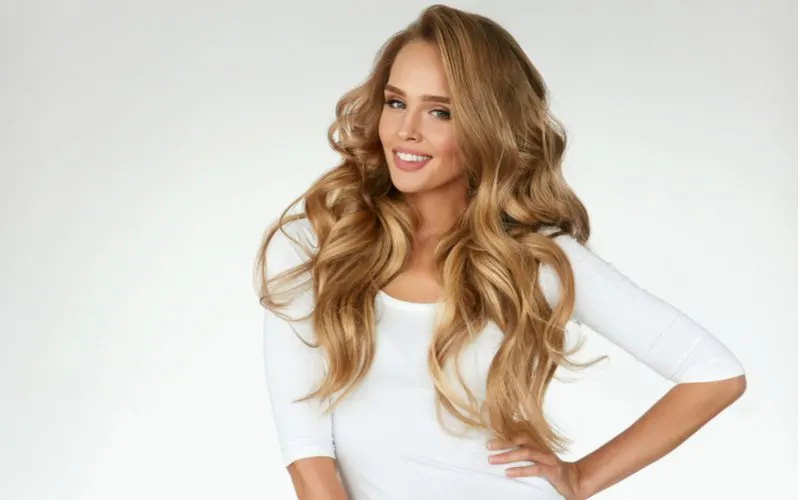
puhhha/Shutterstock
Here’s a lovely warm honey blonde shown on a model with a medium-fair skin tone and warm undertones. This is an example of when brassiness in hair isn’t a bad thing!
2. Caramel Blonde With Neutral Undertones
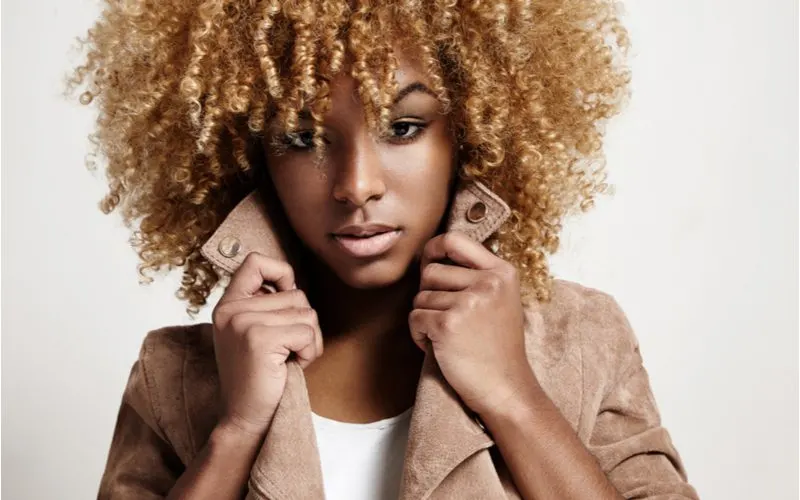
Beauty Stock/Shutterstock
Brassy tones in this caramel blonde perfectly suit this model with a medium-deep skin tone and neutral undertones.
3. Golden Bronde With Warm Undertones
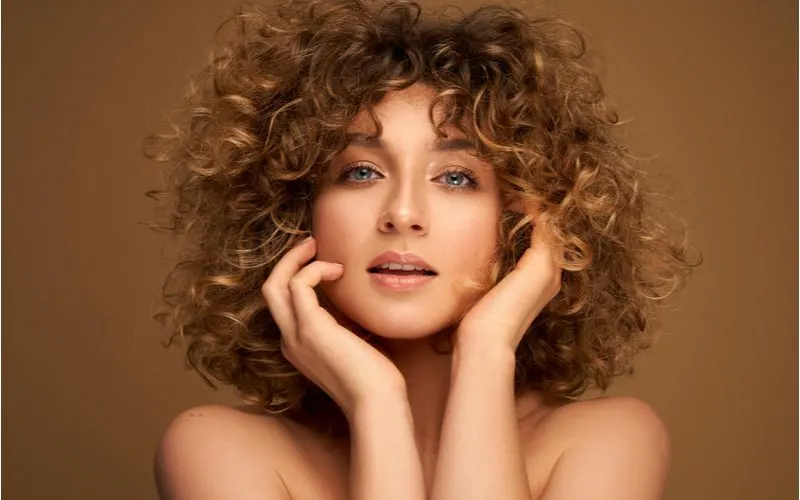
kiuikson/Shutterstock
A cool-toned color would look out of place on this model with warm undertones and a fair skin tone. But this brassy golden blonde/brown (bronde) color is perfect!
Now that you’ve seen a few examples of flattering brassy tones, let’s look at a few examples of when the brass needs to get busted.
4. Ash Blonde Roots With Brassy Balayage
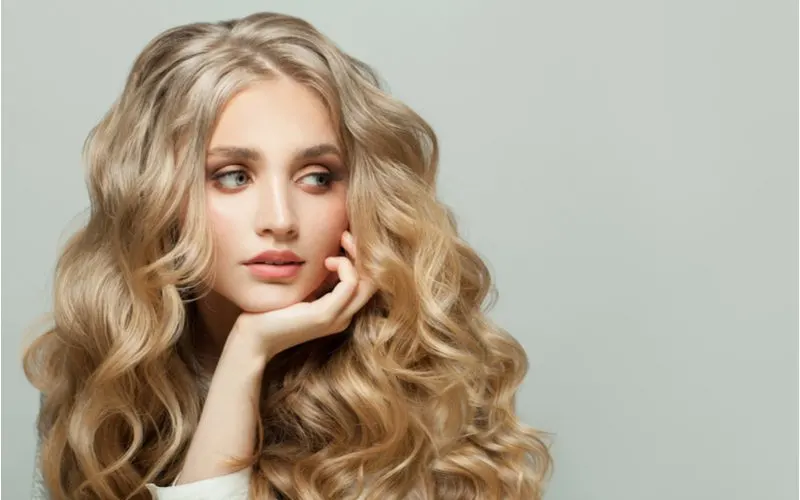
MillaF/Shutterstock
One of the cardinal rules of hair color is never to mix warm and cool-toned shades. Unfortunately, that’s exactly what’s happening here with cool-toned ash blonde roots and warmer golden-blonde balayage along the lengths. This is an example of when you’d want to tone the brass down with a cool ash toner.
5. Burnt-Orange Brass With Cool Undertones
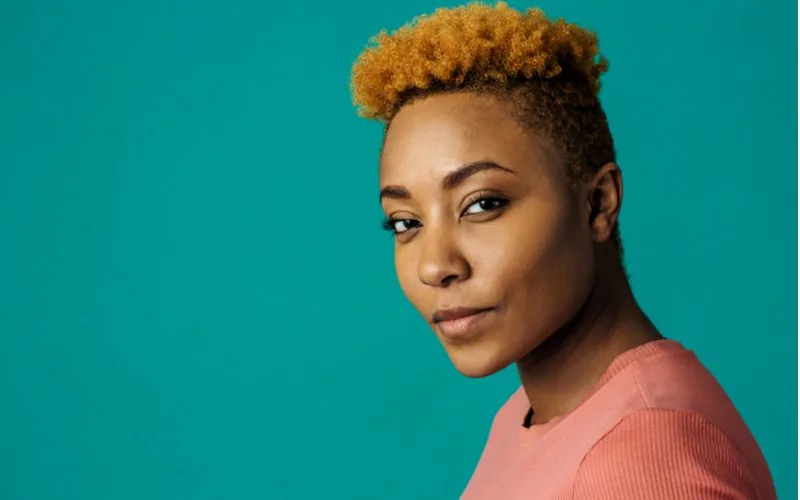
CarlosDavid/Shutterstock
Here’s a great example of under-processed hair that just didn’t lift high enough to bring it out of the brassy orange tones in the hair. The overtly brassy tones here aren’t flattering because the model has cool undertones.
6. Warm Brassy Blonde With Cool Undertones
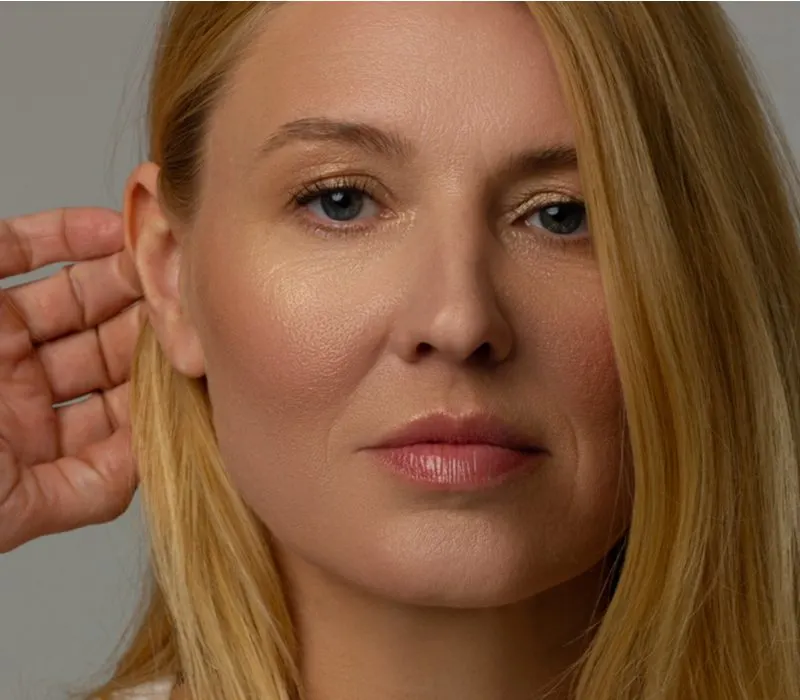
Shtennikova Evgenia/Shutterstock
This woman’s cool undertones would look best with an equally cool-toned blonde shade (think ash blondes and platinum). The warm, brassy tones in her hair don’t suit her cool undertones, and it makes the color clash with her skin.
As you can see, brassiness only looks bad when it’s:
- On a person with cooler undertones
- Next to cool-toned colors, like ash brown or platinum blonde
- Unevenly brassy due to incorrect processing times or improper application
If you’ve ended up with unwanted brassy hair, we’ve got tips for you next!
How to Tone Brassy Hair
Since everyone will uncover brassy tones when they lighten and lift their hair color with bleach, it’s essential to know how to tone brassy hair.
The easiest thing is to leave it up to a professional, who can properly lighten, tone, and glaze your hair to keep your blonde cool-toned for longer. But if you’re insistent on doing it yourself (why are we like this?!), here are your step-by-step instructions to tone brassy hair.
Note: These instructions are for anyone who has already lifted their hair to the proper level (preferably level 9 to avoid fighting too much brassiness). So if your hair is light enough but just has warm brassy tones you don’t want, follow these instructions to tone it and neutralize that warmth. Check the chart below to see what level your hair is currently sitting at.
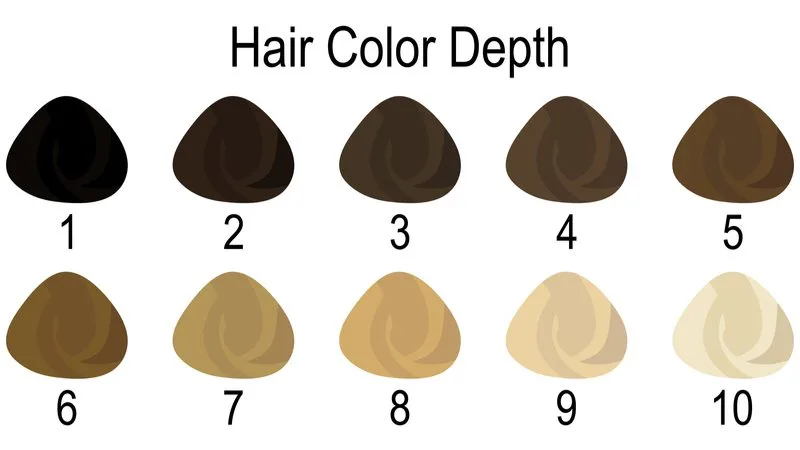
Sidhe/Shutterstock
Toning brassy hair means going back to something you learned in art class years ago: The color wheel. If you take a look at the color wheel, you’ll see that orange (the underlying tone in brassy colors) is directly opposite of blue.
This makes blue the complementary color to orange – it counteracts, neutralizes, or cancels it out. So the key to toning orange-y brass is using blue pigment. Likewise, if you look at yellow on the color wheel, you’ll see that purple is directly opposite. So purple is the complementary color to yellow.
Purple cancels out yellow tones to neutralize brass. If your brassiness looks more yellow than orange, you’ll need to rely on violet pigments to neutralize and tone that warmth. The absolute easiest way to tone brassy hair is with toning shampoo.
You can buy both blue and purple shampoo for toning. Since most blondes struggle with toning the yellowish brass from their hair, we recommend opting for purple shampoo.
Try Redken Color Extend Blondage Color Depositing Purple Shampoo for fine or dry hair, or grab some L’Oreal Paris EverPure Sulfate-Free Purple Shampoo if you have damaged hair.
Use any purple shampoo once or twice a week, leaving it on for about 3 minutes before rinsing. These shampoos deposit a very small amount of violet pigment onto hair to neutralize any yellow brassy tones.
If toning shampoo just ain’t cutting it, you’ll need a chemical toner. Hair toners are sometimes referred to as glosses or demi-permanent color. They don’t lighten your hair at all, but they deposit pigment on top of the hair to change the overall tone of the color.
Choose a demi-permanent toner that says Violet or V if you need to yeet the yellow out. Choose one that says Blue-Violet or BV if you need to get rid of both yellow and orange brassy tones. Choose one that says Blue if you’re only dealing with orange brass tones.
You can pick up a demi-permanent toner online or at any beauty supply store. You’ll also need to grab some 10-volume developer. Don’t be afraid to ask an associate for help choosing the proper toner color!
Steps to Take
Here’s how to mix and apply your toner to neutralize unwanted brassy tones.
Supplies
- Violet, Blue-Violet, or Blue toner (depending on the brassy tones in your hair)
- 10 volume developer
- Small mixing bowl
- Hair color brush
- Shower cap
- Clips for sectioning
Directions
- In your small mixing bowl, mix one part of your chosen toner with equal parts developer. So, you’re adding the same amount of developer as toner. If you add 1 ounce of toner, put in 1 ounce of developer. Mix thoroughly with your application brush.
- Section your hair if needed for even application. Dip the brush into the toner mix and apply it to the areas you need to tone. Make sure you fully saturate each area. Work quickly to ensure the first sections don’t process much faster than the last sections.
- Cover your hair with a shower cap and set a timer for 15 minutes.
- After 15 minutes, pull a small strand out to wipe the toner off and assess. If it’s done, move to the next step. If it’s not, set a timer for 5 minutes.
- Once the timer goes off and you like the color, rinse the toner out completely. This might take 2-3 minutes. Follow up with shampoo and conditioner.
That’s it! You’ve successfully toned your hair and removed all traces of unwanted brassiness. You’ll need to repeat this process every 5-8 weeks since the toner is only demi-permanent. Once you’ve finished toning, you should have cool-toned blonde for the next month or two!
Read Next: How to Get Rid of Brassy Hair and How to Tone Hair
Things to Consider
You’re pretty much an expert on brassiness by now, but let’s recap what we’ve covered for the sake of posterity. So, what is brassiness in hair again? Brassy hair refers to unwanted warm tones in the hair that naturally peek through when you lighten a darker hair color to a lighter hair color.
What causes brassiness? As your hair is oxidized by bleach, your natural pigments fade from black to brown, red, orange, yellow, and finally pale yellow blonde (level 10). So when you bleach your hair, you’ll suddenly see orange-y or yellowish tones that you didn’t realize were hiding underneath your natural color.
Is brassy hair always bad? Not necessarily, because brass essentially refers to warm tones. So if you’re after a warm, golden blonde or a strawberry copper tone, brassy tones are exactly what you want. If you’re after a cool, ash-toned color, like ash blonde or platinum, brassy tones are bad and require a toner to be neutralized.
How can you deal with brassy tones you don’t want? You can opt to use a toning shampoo (the easiest method), but major brassiness might require a chemical toner. Use a demi-permanent Violet, Blue-Violet, or Blue toner to neutralize the orange or yellow pigments in your hair and bust that brass.
If the thought of your blonde going brassy sends you into a panic, there’s no need to worry. It happens to everyone! As long as you know how to properly tone those unwanted warm colors out, you can achieve a cool-toned blonde without a trace of gold, brass, or orange.

